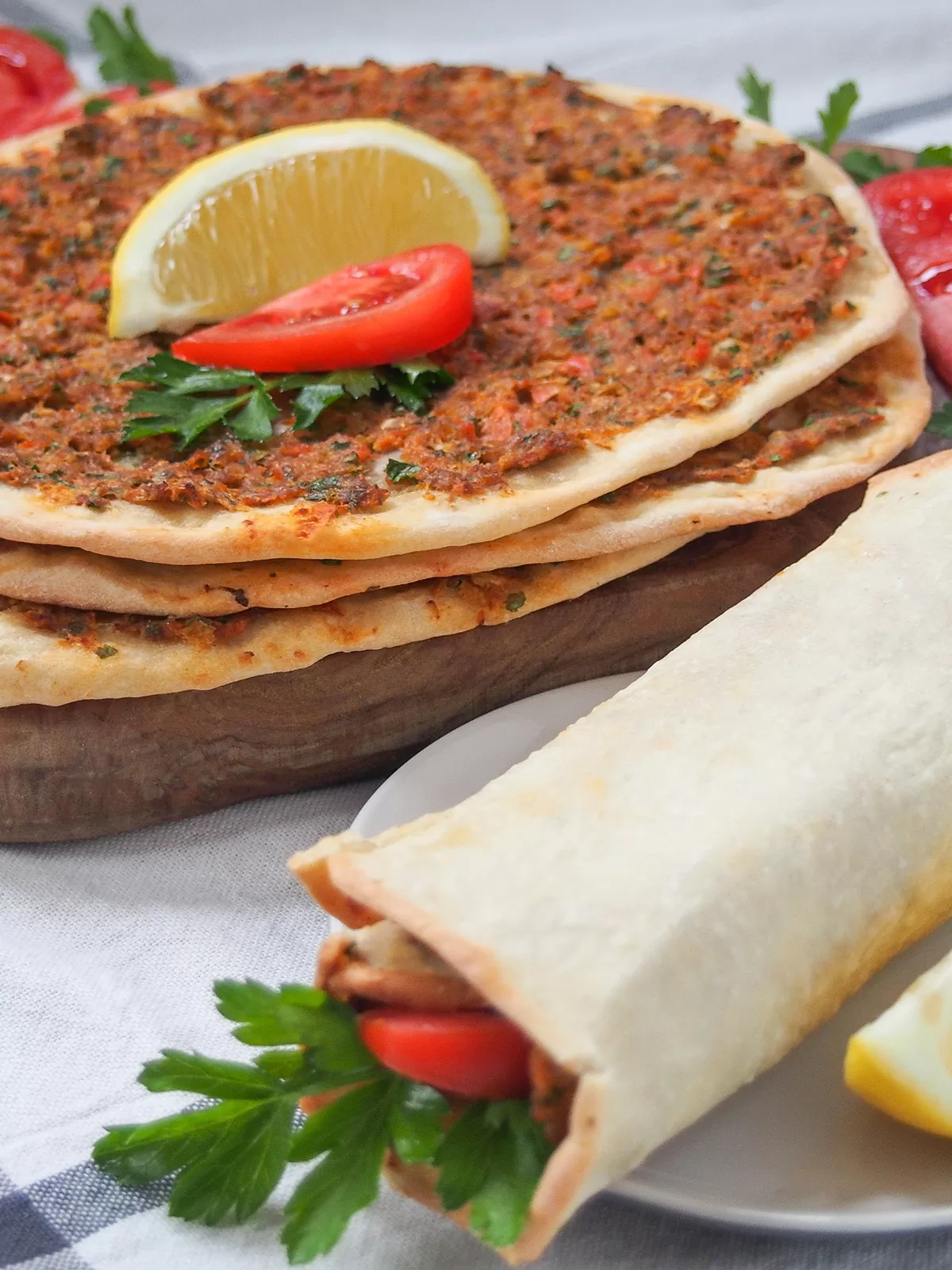Turkish food offers a delicious mix of flavors from different cultures. It blends tastes from the Middle East, Central Asia, and the Mediterranean. You’ll find a wide range of dishes that use fresh ingredients and spices.
Turkish recipes are often easy to make at home with simple ingredients. Many dishes use common items like vegetables, grains, and meats. You can try cooking Turkish food to add some variety to your meals. These recipes will let you explore new tastes without needing hard-to-find items.
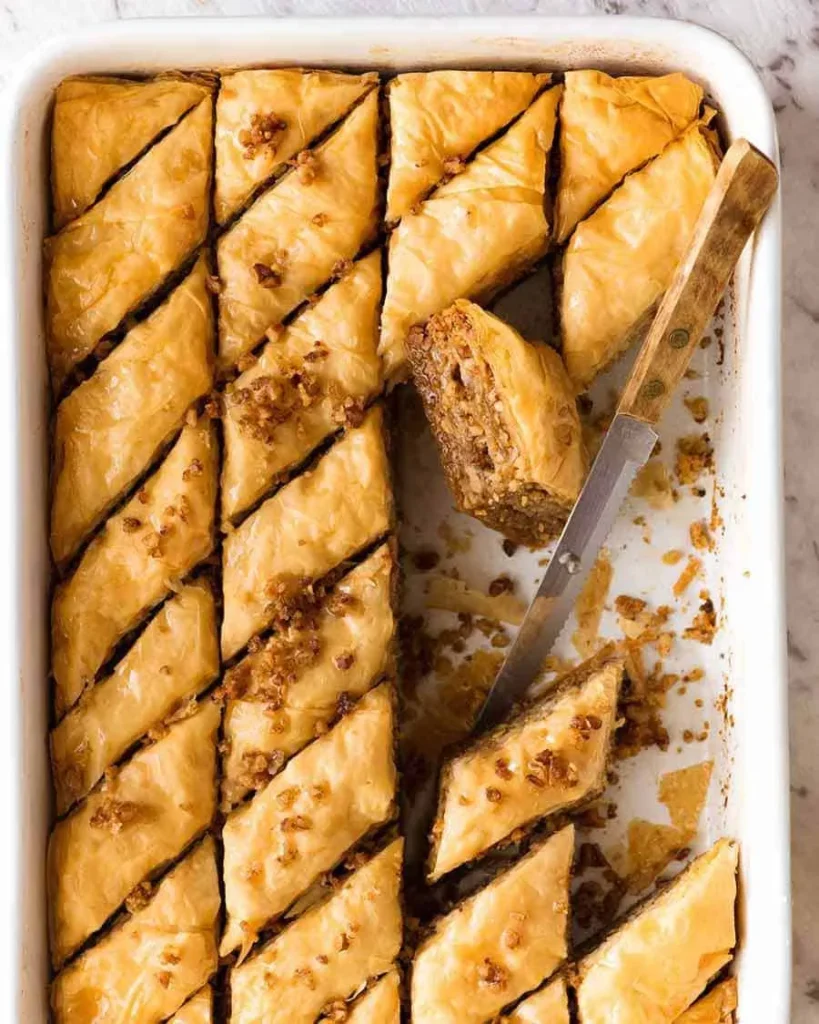
1. Baklava
Baklava is a beloved Turkish dessert that will satisfy your sweet tooth. You’ll love the layers of flaky phyllo dough filled with chopped nuts.
To make baklava, start by preparing a syrup with sugar, water, and lemon juice. Set it aside to cool.
Next, layer sheets of phyllo dough, brushing each with melted butter. Sprinkle a mixture of finely chopped pistachios or walnuts between every few layers.
Cut the baklava into diamond shapes before baking. Once golden brown, pour the cooled syrup over the hot pastry.
Let it soak up the syrup for a few hours before serving. You’ll enjoy the perfect balance of crispy layers, nutty filling, and sweet syrup in every bite.
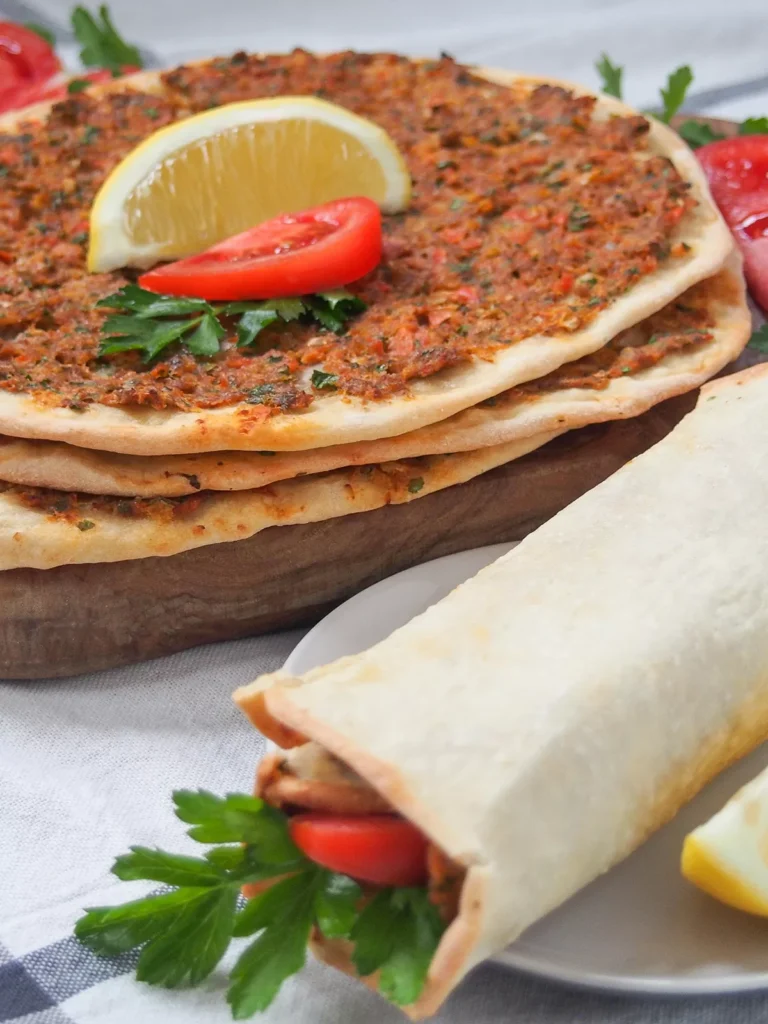
2. Lahmacun
Lahmacun is a popular Turkish flatbread topped with spiced meat. It’s often called “Turkish pizza” but has a much thinner crust.
To make lahmacun, start by preparing a simple dough with flour, water, yeast, and salt. Let it rise while you make the topping.
For the topping, combine ground lamb or beef with finely chopped onions, tomatoes, peppers, and garlic. Add spices like cumin, paprika, and red pepper flakes.
Roll out the dough into thin circles and spread the meat mixture on top. Bake in a very hot oven for about 7 minutes until the edges are crispy.
Serve your lahmacun hot, topped with fresh parsley and a squeeze of lemon juice. You can roll it up or eat it flat like a pizza.
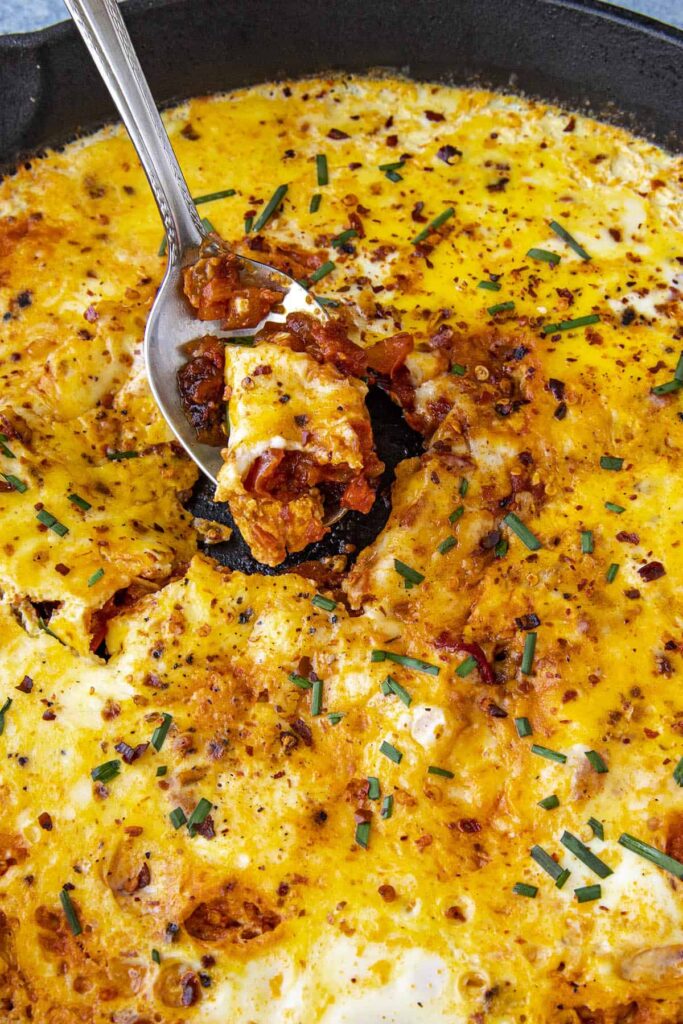
3. Menemen
Menemen is a tasty Turkish breakfast dish made with eggs, tomatoes, and peppers. To make it, start by cooking diced onions in olive oil until soft.
Add chopped tomatoes and peppers, then simmer until the tomatoes break down into a sauce. Crack eggs directly into the pan and gently scramble them with the vegetable mixture.
Cook until the eggs are just set but still creamy. Sprinkle with fresh parsley before serving. You can enjoy menemen on its own or with crusty bread to soak up the flavorful sauce.
This simple yet delicious dish is perfect for a hearty breakfast or brunch. You can adjust the spiciness by adding hot peppers if you like more heat.
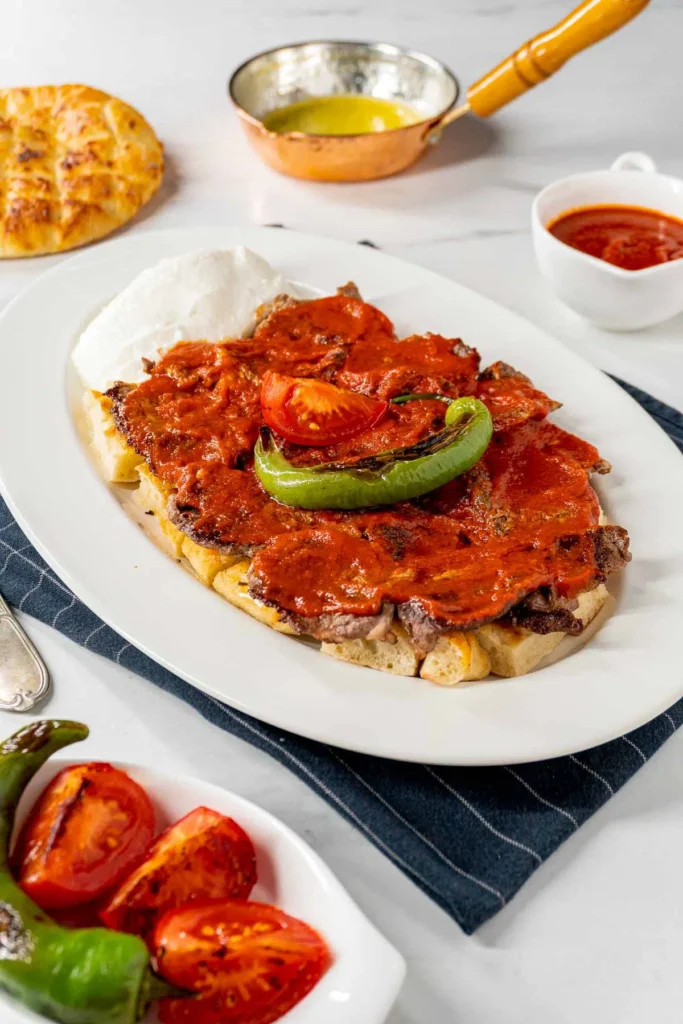
4. İskender Kebap
İskender Kebap is a beloved Turkish dish that combines tender meat with rich flavors. To make it at home, start with thinly sliced lamb or beef. Marinate the meat in a mix of grated onion, olive oil, and oregano.
Toast pita bread and cut it into bite-sized pieces. Cook the marinated meat in a skillet until it’s nicely browned. Arrange the toasted pita on a plate and top it with the cooked meat.
Pour warm tomato sauce over the meat and bread. Add a dollop of tangy yogurt on the side. For the finishing touch, drizzle melted butter over everything just before serving.
This dish brings together savory meat, tangy sauce, and creamy yogurt for a truly satisfying meal. You can also add grilled tomatoes and peppers as side accompaniments.
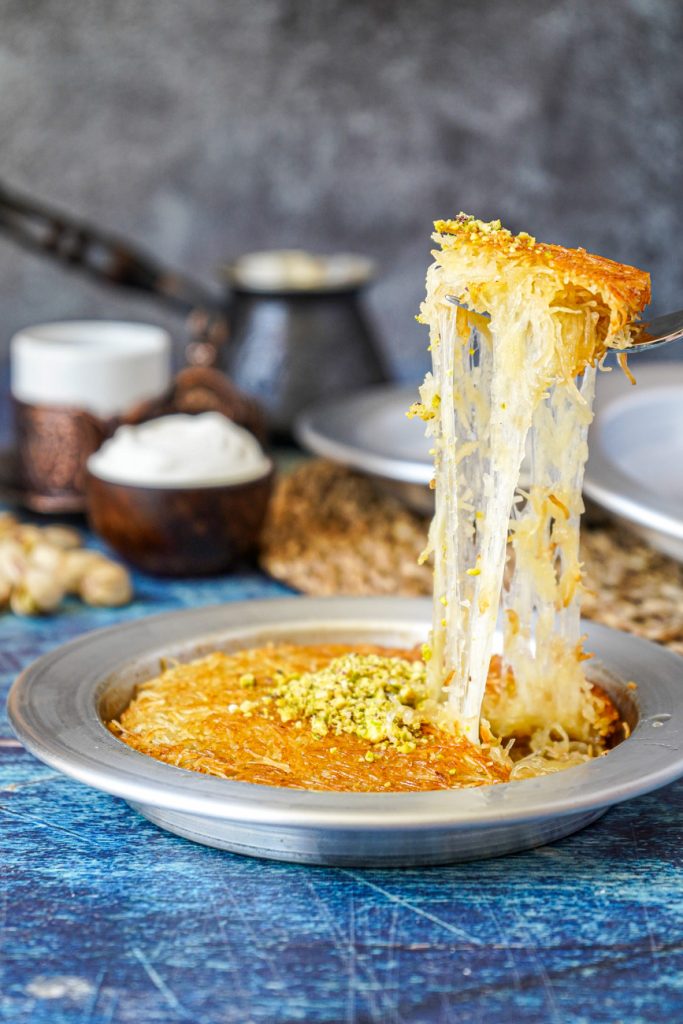
5. Künefe
Künefe is a sweet Turkish dessert that will delight your taste buds. This treat features shredded pastry dough filled with melted cheese and soaked in syrup.
To make künefe, you’ll need kadayıf (shredded phyllo dough), unsalted cheese, butter, and sugar syrup. Layer the kadayıf in a round pan, add the cheese, and top with more kadayıf.
Bake the künefe until it turns golden and crispy. Once done, pour warm sugar syrup over it. Serve this dessert hot to enjoy the contrast between the crunchy exterior and gooey cheese center.
Künefe is popular throughout Turkey and the Middle East. You can find it in many restaurants or try making it at home for a special treat.
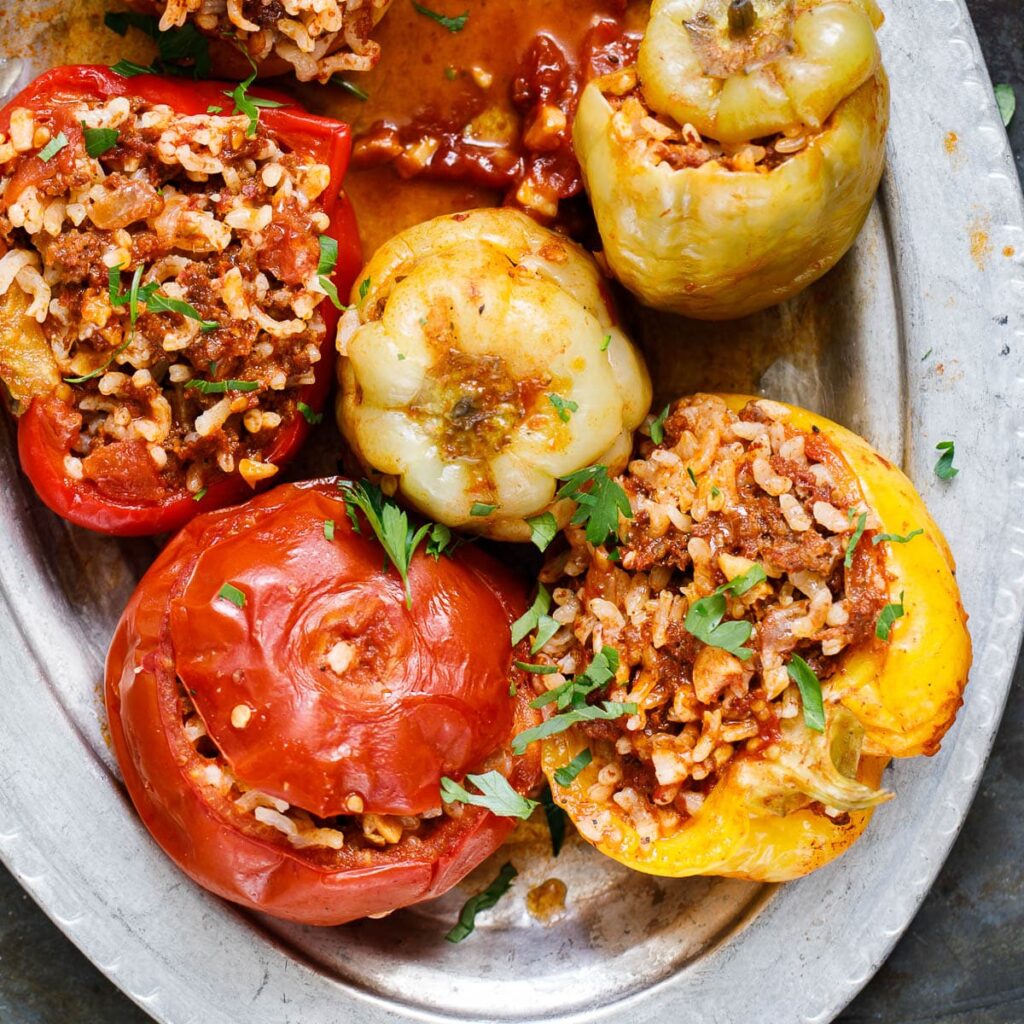
6. Dolma
Dolma is a popular Turkish dish of stuffed vegetables. You can make it with grape leaves, peppers, or zucchini. The filling usually has rice, onions, herbs, and sometimes ground meat.
To prepare dolma, mix the filling ingredients in a bowl. Stuff the vegetables or grape leaves, leaving space for the rice to expand. Place them in a pot and cover with broth or water.
Cook the dolma over medium heat for about 30 minutes. The liquid should be absorbed by then. For extra flavor, add lemon juice before serving.
Dolma makes a tasty appetizer or side dish. You can enjoy it hot or cold. Try different veggie and filling combos to find your favorite.
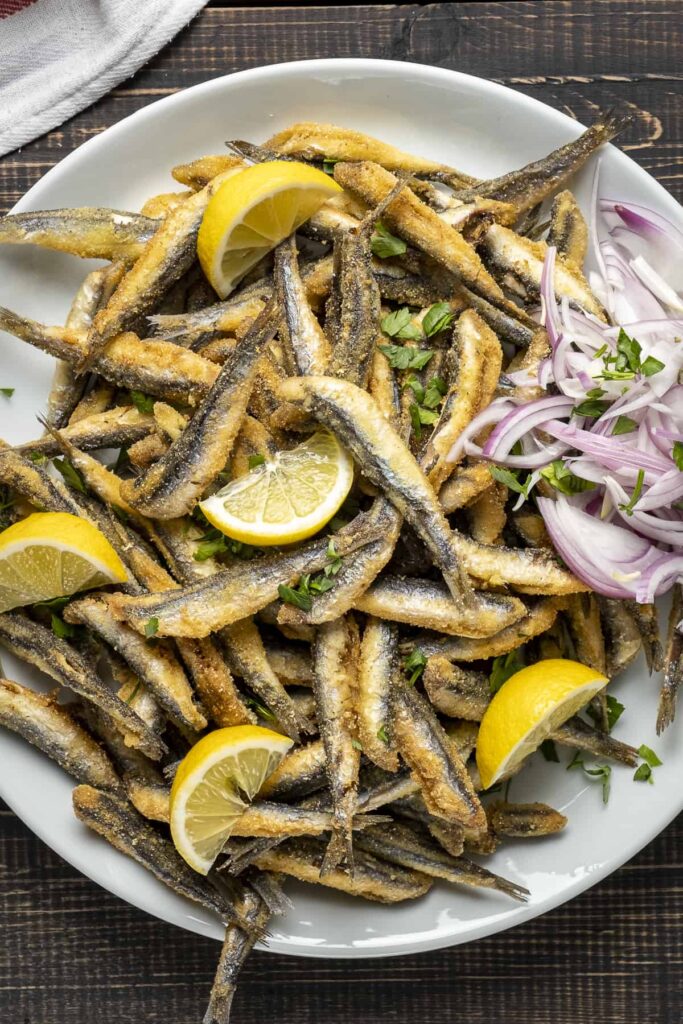
7. Hamsi Tava
Hamsi Tava is a tasty Turkish dish made with fried anchovies. You’ll love this simple yet flavorful recipe.
To make Hamsi Tava, clean and rinse the anchovies. Sprinkle them with salt and coat them in corn flour or regular flour.
Heat olive oil in a large pan over medium heat. Fry the anchovies for about a minute on each side until they turn golden brown.
You can arrange the fish in a circular pattern in the pan, with their tails pointing toward the center. This creates a visually appealing dish.
Serve your Hamsi Tava hot as a main course or appetizer. It goes well with lemon wedges and a side of fresh salad.

8. Meze Platter
A Turkish meze platter is a delightful way to start a meal or entertain guests. You can create your own by selecting a variety of small dishes.
Popular options include fava bean puree, stuffed grape leaves, and roasted red pepper dip. Add some sliced vegetables, olives, and bread for a complete spread.
Many meze dishes can be prepared ahead of time, making them perfect for parties. Arrange everything on a large, flat dish for an eye-catching presentation.
Pair your meze platter with Turkish wine or raki for an authentic experience. This style of eating encourages sharing and conversation among friends and family.
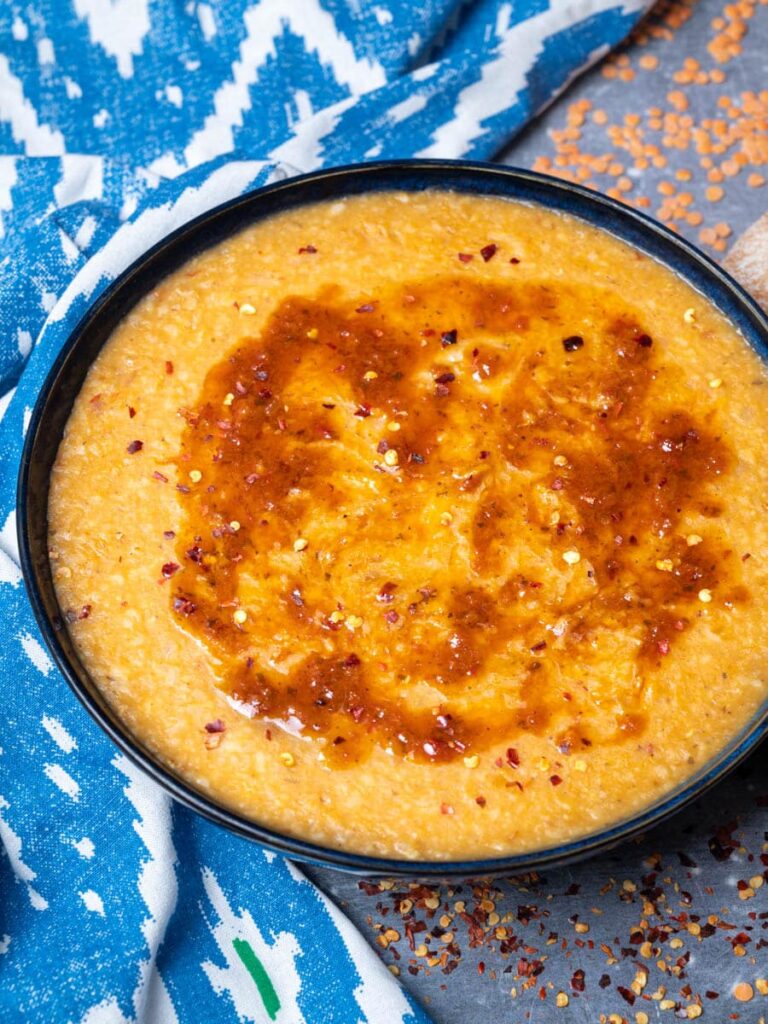
9. Ezogelin Soup
Ezogelin soup is a hearty Turkish dish that combines red lentils, rice, and bulgur. It’s simple to make but packed with flavor.
To prepare, start by sautéing onions and garlic in olive oil and butter. Add tomato paste, chopped tomatoes, and spices like paprika.
Mix in the lentils, rice, and bulgur. Pour in beef or vegetable broth and bring to a boil. Reduce heat and simmer until everything is tender, about 20-30 minutes.
For extra flavor, melt some butter and stir in tomato paste to drizzle on top before serving. This warming soup is perfect for cold days.
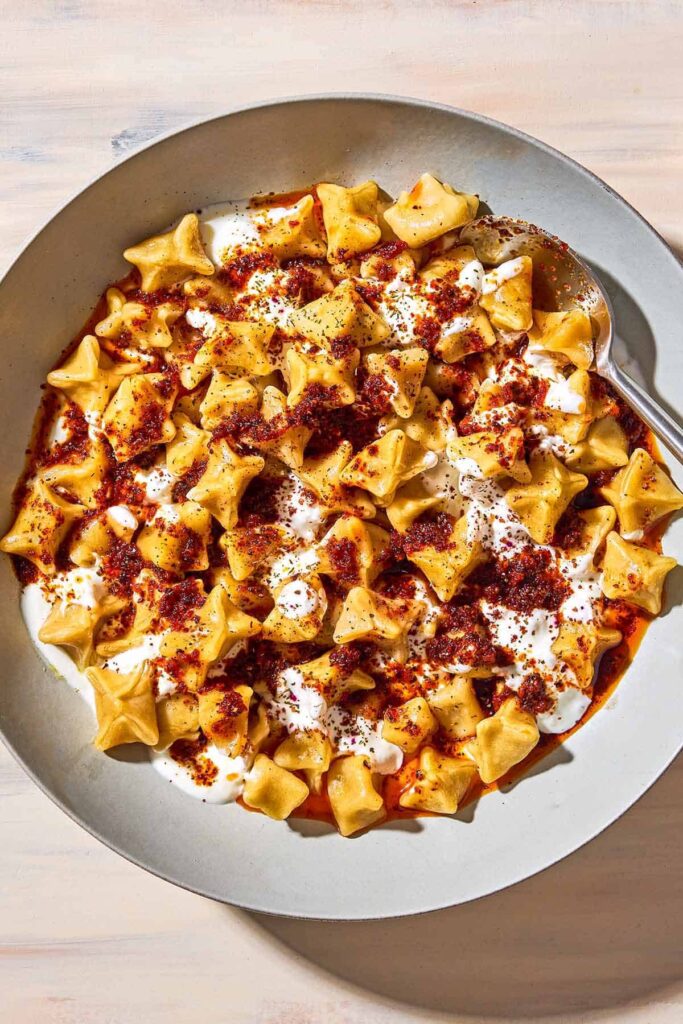
10. Manti
Manti are small Turkish dumplings filled with seasoned ground meat. You can make them at home with a few simple ingredients.
To prepare manti, mix flour, eggs, and water to form a soft dough. Let it rest while you make the filling with ground lamb or beef, onions, and spices.
Roll out the dough thinly and cut into small squares. Place a tiny amount of filling in the center of each square. Fold the edges inward to form a pouch shape.
Boil the manti until they float. Serve with a garlicky yogurt sauce and a drizzle of spiced olive oil. The combination of tender dumplings, savory meat, and tangy yogurt creates a delicious Turkish comfort food.
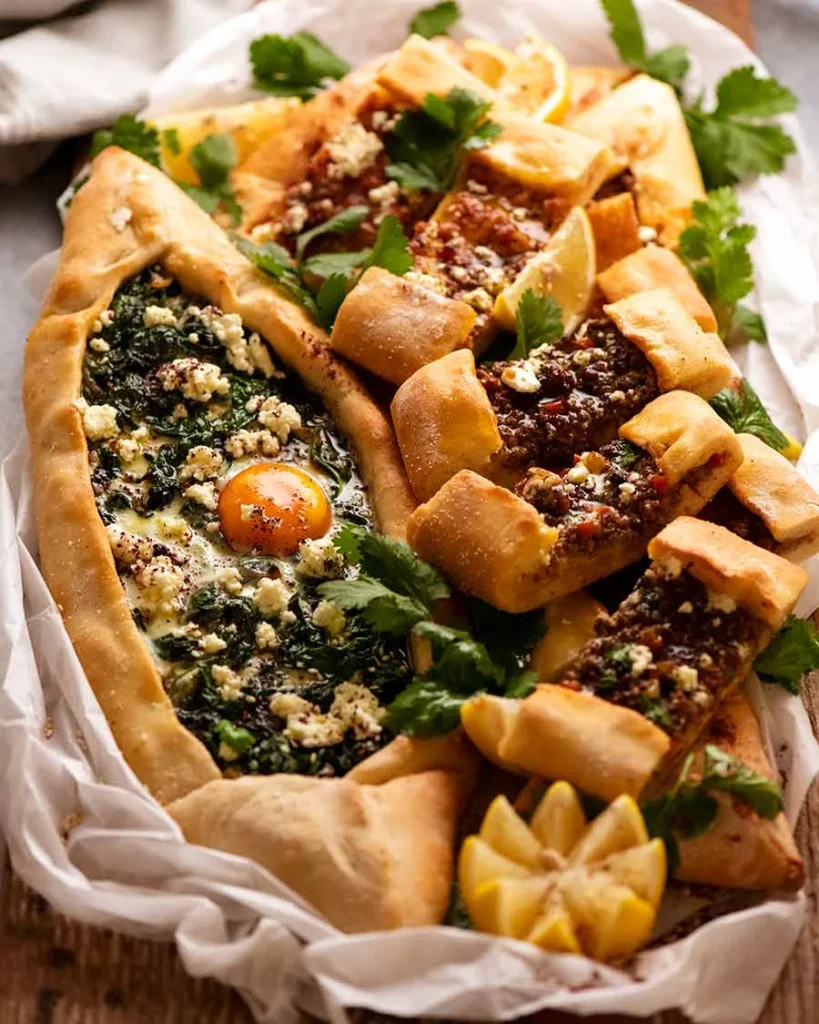
11. Pide
Pide is a popular Turkish flatbread that’s often described as Turkish pizza. You can make it at home with a simple yeast dough and your favorite toppings.
To prepare pide, start by making the dough with flour, yeast, sugar, salt, oil, and warm water. Knead it until smooth and let it rise for an hour.
For toppings, you have many options. Try spinach, Turkish sausage, or spiced lamb. Don’t forget to add cheese for extra flavor.
Shape the dough into ovals and add your toppings, leaving a border to fold over. Bake the pide in a hot oven until golden brown.
Serve your homemade pide hot and enjoy this tasty Turkish treat!
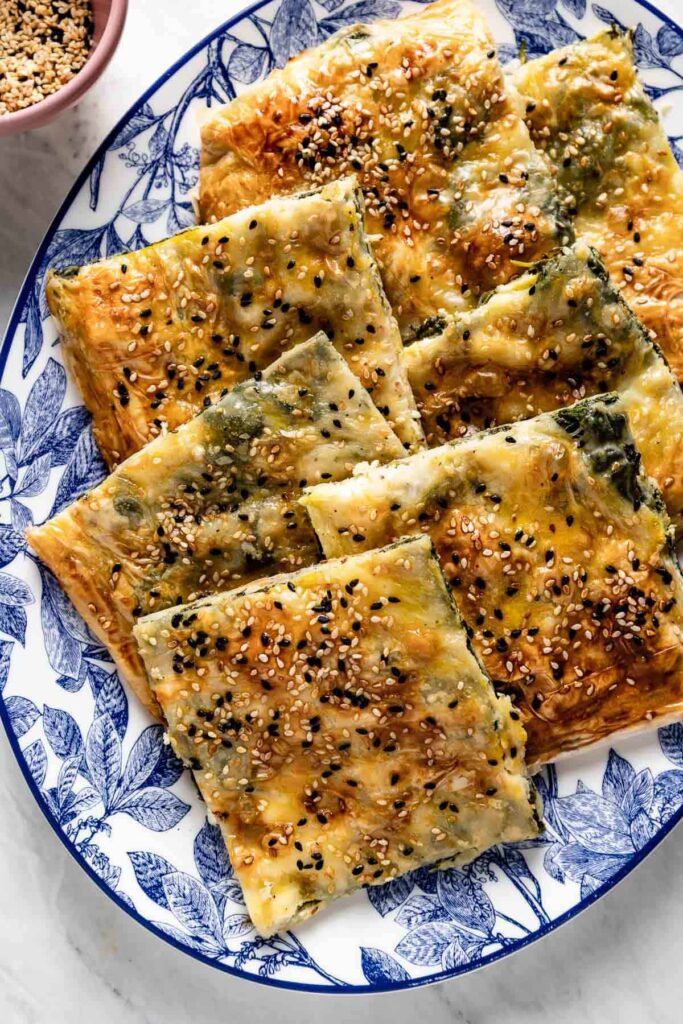
12. Borek
Borek is a tasty Turkish pastry you’ll love. It’s made with thin layers of dough and filled with cheese, meat, or veggies.
You can find borek in many shapes. Some are rolled into cigars, while others are layered in trays. The dough gets crispy when baked, giving a nice crunch.
To make borek, you’ll need phyllo dough, butter, and fillings. Popular choices are feta cheese, spinach, or ground beef. Brush each layer with butter for extra flavor.
Borek works great for breakfast or as a snack. You can make it ahead and freeze it for later. Just heat it up when you’re ready to eat.
Understanding Turkish Cuisine
Turkish food blends many cultural influences with local ingredients. It varies across regions and has a rich history spanning centuries.
Historical Influences
Turkish cuisine has roots in Ottoman Empire traditions. Arab, Persian, and Central Asian flavors shaped early dishes. Later, European and Mediterranean foods added new tastes.
Spices like cumin, mint, and red pepper flakes became common. Yogurt and lamb grew popular too. Rice pilaf and stuffed vegetables came from Persian cooking. Kebabs trace back to nomadic Turkic tribes.
The Ottoman palace kitchens created fancy meals that spread across the empire. They mixed local foods with exotic imports. This led to new recipes still enjoyed today.
Regional Varieties
Turkey’s diverse geography leads to different regional cuisines. Coastal areas use lots of fish and olive oil. The Black Sea region loves corn and anchovies. Central Anatolia focuses on wheat and meat dishes.
In the east, you’ll find spicy foods and kebabs. The southeast uses more bulgur wheat than rice. Western Turkey has many vegetable dishes with olive oil.
Istanbul blends foods from all regions. You can try specialties from across Turkey there. Each area has unique ingredients and cooking styles that reflect local culture.
Common Ingredients in Turkish Cooking
Turkish cuisine relies on several key ingredients that give dishes their unique flavors and textures. These components form the foundation of many traditional recipes.
Spices and Herbs
Turkish cooking uses a variety of spices and herbs to add depth and aroma. Cumin brings an earthy flavor to many dishes. Paprika adds a sweet, smoky taste. Mint is popular in both savory and sweet recipes.
Parsley is used fresh as a garnish or chopped into salads. Oregano flavors meat dishes and stews. Sumac provides a tart, lemony taste.
Red pepper flakes bring heat to many recipes. Cinnamon and allspice are common in both savory and sweet foods. Thyme and bay leaves are often used in soups and stews.
Oils and Fats
Olive oil is a staple in Turkish cooking. It’s used for sautéing, dressing salads, and as a finishing oil. Extra virgin olive oil is prized for its flavor.
Butter, especially clarified butter, is used in some dishes. It adds richness to rice pilaf and pastries.
Yogurt is a common ingredient in both savory and sweet recipes. It’s used as a sauce, marinade, and cooking liquid.
Lamb fat is sometimes used to add flavor to meat dishes.
Grains and Legumes
Bulgur wheat is a key ingredient in many Turkish dishes. It’s used in pilafs, salads like tabbouleh, and as a stuffing for vegetables.
Rice is another staple grain. It’s used in pilafs, soups, and as a side dish.
Lentils are popular in soups and stews. Red lentils are used to make a common soup called mercimek çorbası.
Chickpeas are used in hummus, salads, and stews. They’re also ground into flour for some recipes.
Dried beans, especially white beans, are used in soups and stews.
